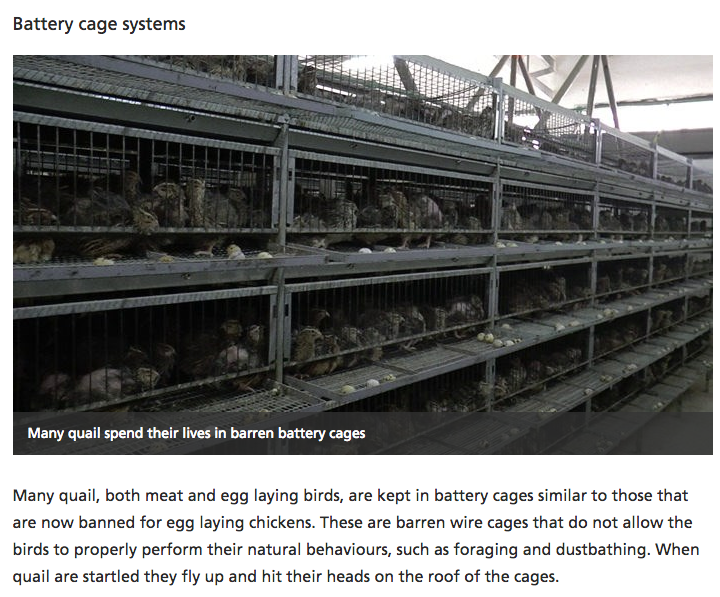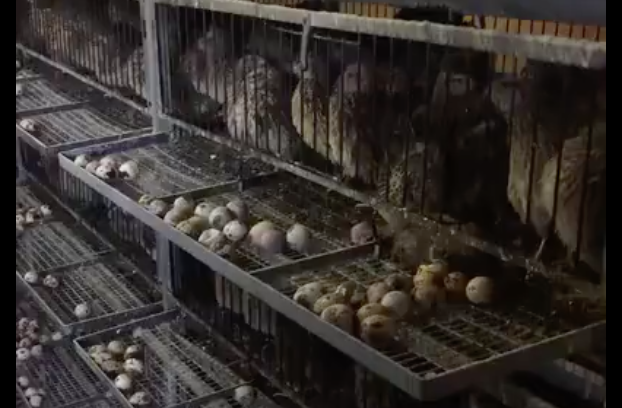A video emerged on FB today which we have decided to report on which appears to show quail battery farming in Lytham.
The video by a local resident appears to show quails being kept at a local farm in Lytham in what appear to be cramped harsh “battery” conditions.
The video had been viewed over 2000 times in just an hour and appears to show some dead quails in cages along with other quails who appear to have bare/featherless backs. The cages seem to be about 2 ft long and are just tall enough for the birds to stand upright in.
After researching the current regulations on battery farming quails in conditions like these we have found that the cage appears to match the size that is described as an “enriched cage” as opposed to a “battery cage” which means the difference between 550 cm Sq and 750 cm Sq for hens (not Quails).
Although this video doesn’t show in great detail inside the cages – they don’t appear to meet the other guideline standards set out by law makers when the regulations were changed in 2011 and came into force in 2012.
Compassions in World Farming – a website for better animal rights describes this practice as battery farming quails

According to the British Hen Welfare Group – Cages should meet certain requirements for hens – but this doesn’t seem to apply to quails..
“British hens and British farmers:
British farmers invested heavily to ensure they were compliant with the new Laying Hens Directive that came into force in 2012. This EU-wide Directive banned the use of barren battery cages and introduced the enriched or colony cage which is designed to hold up to 90 birds and give the hens more freedoms. These include:
- Potential to nest – one end of the enriched cage has a small nesting area
- Potential to roost – perches 3-4” high run along part of the cage
- Potential to scratch – a small scratch area is provided with friable matter
- Potential to stretch – the height and width of the cage allows for more freedom of movement
The enriched cage offers an improved environment over the barren battery cage, allowing them to perform the natural behaviours outlined above.”
Although these guidelines are set out Specifically for hens – at the time of publication we hadn’t found comparable specifications for quails which are smaller birds indeed.
Although this video contains images that some people might find distressing – it appears on the surface that these conditions are literally the minimum required.
What are your thoughts on this video? Do you think that birds should be kept in cramped conditions? The argument for this practice seems to be that in some EU member states – birds can be kept in ultimately worse conditions which mean that the cost of the product is lower which in turn makes it more difficult for local producers to compete with the lower prices.
An article from the independent in 2011 summed up the “new” conditions in which hens were to be kept although this doesn’t specify a difference for other types of birds.
“Battery life: the truth about chicken farms







